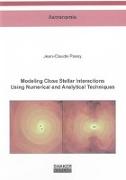- Start
- Modeling Close Stellar Interactions Using Numerical and Analytical Techniques
Modeling Close Stellar Interactions Using Numerical and Analytical Techniques
Angebote / Angebote:
The common envelope (CE) interaction is a still poorly understood, yet critical phase of evolution in binary systems that is responsible for several astrophysical classes and phenomena. In this thesis, we use various approaches and techniques to investigate different aspects of this interaction, and compare our models to observations.
We start with a semi-empirical analysis of post-CE systems to predict the outcome of a CE interaction. Using detailed stellar evolutionary models, we revise the a equation and calculate the ejection efficiency, a, both from observations and simulations consistently. We find a possible anti-correlation between a and the secondary-toprimary mass ratio, suggesting that the response of the donor star might be important for the envelope ejection.
Secondly, we present a survey of three-dimensional hydrodynamical simulations of the CE evolution using two different numerical techniques, and find very good agreement overall. However, most of the envelope of the donor is still bound at the end of the simulations and the final orbital separations are larger than the ones of young observed post-CE systems.
Despite these two investigations, questions remain about the nature of the extra mechanism required to eject the envelope. In order to study the dynamical response of the donor, we perform one-dimensional stellar evolution simulations of stars evolving with mass loss rates from 10-3 up to a few M?/yr. For mass-losing giant stars, the evolution is dynamical and not adiabatic, and we find no significant radius increase in any case.
Finally, we investigate whether the substellar companions recently observed in close orbits around evolved stars could have survived the CE interaction, and whether they might have been more massive prior to their engulfment. Using an analytical prescription for the disruption of gravitationally bound objects by ram pressure stripping, we find that the Earth-mass planets around KIC 05807616 could be the remnants of a Jovian-mass planet, and that the other substellar objects are unlikely to have lost significant mass during the CE interaction.
Libri-Titel folgt in ca. 2 Arbeitstagen




